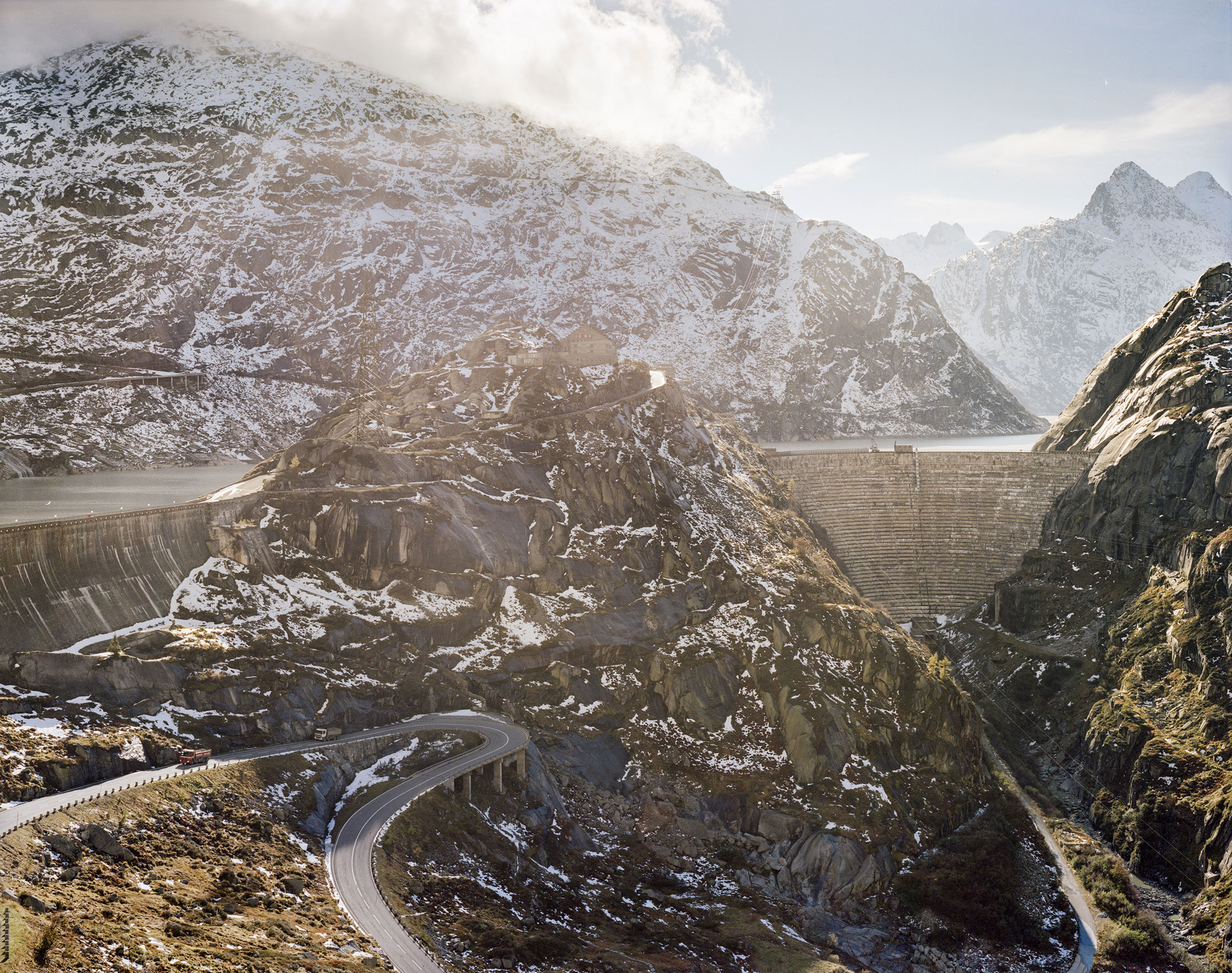Our Instagram feeds are inundated with photos of pristine nature—boundless evergreen-lined valleys and glacial fields that stretch for miles—an otherworldly beauty untouched by mankind.
However, as we begin to experience the effects of climate change, with the looming threat of imminent natural disaster always present, these sites of natural beauty have a certain quiet menace to counteract their beauty. Around Europe, urban planners and landscape architects have joined forces to engineer our way out of potential natural disasters with dams, levees, dikes, rock fall barriers and other safety measures. This changing balance between man and nature is the focus of photographer Claudius Schulze’s latest book, State of Nature.

“I do not claim to delineate the border between ‘artificial’ and ‘natural.’”
Traveling around Europe in a cherry picker-equipped van, his one-eared cat and a large format camera to document various spots where man has pre-emptively intervened with nature. “As the car looks very official, with the crane arm on the roof, the yellow flash lights and the red/white reflective paint job, I could drive and camp literally everywhere,” Claudius says of the 50,000km road trip. The crane and large format give a breathtaking view of locations everywhere between Blackpool Beach and the Alps.

“I do not claim to delineate the border between ‘artificial’ and ‘natural,’” he says about the project, “On the contrary, the defences are prerequisite to these landscapes: the sunshine sparkles on the surface of the mountain lakes only because it was artificially dammed, the dunes only rise because they are protected against storm surges.”
The book features essays from writer Oskar Piegsa and Dr. Thomas Glade, professor at Vienna University focused on disaster prevention, who help to explore these artificial buffers against nature that we’ve created. The layout of the book comes from Dutch designer Sybian Kuiper, a fitting choice as Claudius found himself most impressed by the Netherlands’ approach to landscape architecture. “For centuries the Dutch worked to conquer and defend land from the sea and that continues today. Not only did the Dutch build the largest structures—see Afsluitdijk and Delta Works—they also integrated them perfectly into the landscape. Very often, their sea defences look like dunes, although with cores of steel and concrete.”

“The sunshine sparkles on the surface of the mountain lakes only because it was artificially dammed, the dunes only rise because they are protected against storm surges.”
These bulwarks against nature are going to become more prominent within our lifetimes and State of Nature captures a particularly special moment in time. We’ve started laying the foundation for a world where natural disasters will become more frequent and devastating, and are working actively to adapt in order to survive.
The book is still seeking funding, so if you’d like to own a copy of State of Nature, pledge your support on the Kickstarter page.
For more photo stories, follow along on our travels around the globe in our Photo Essays.
Text:Kevin Chow
Photography:Claudius Schulze






